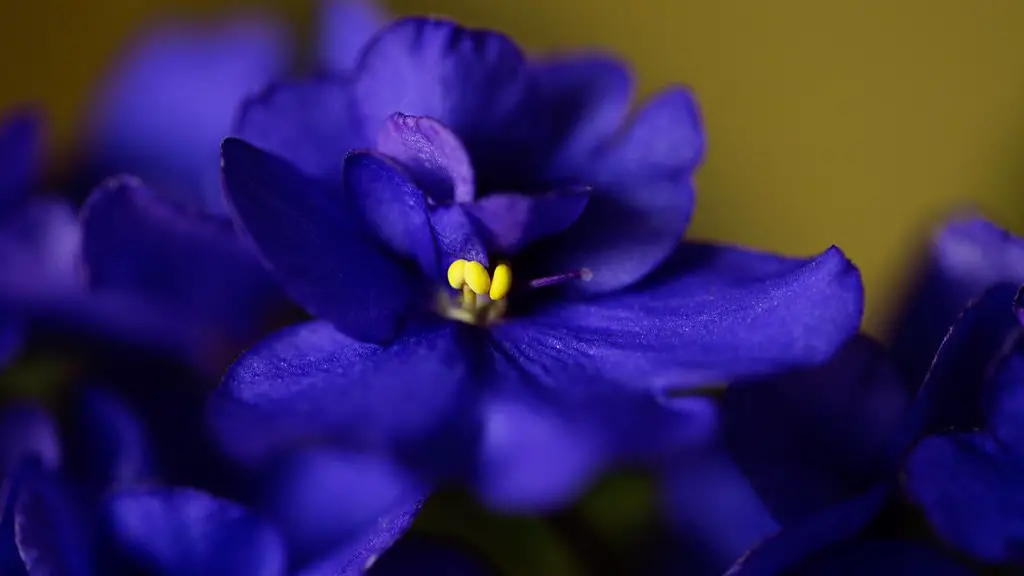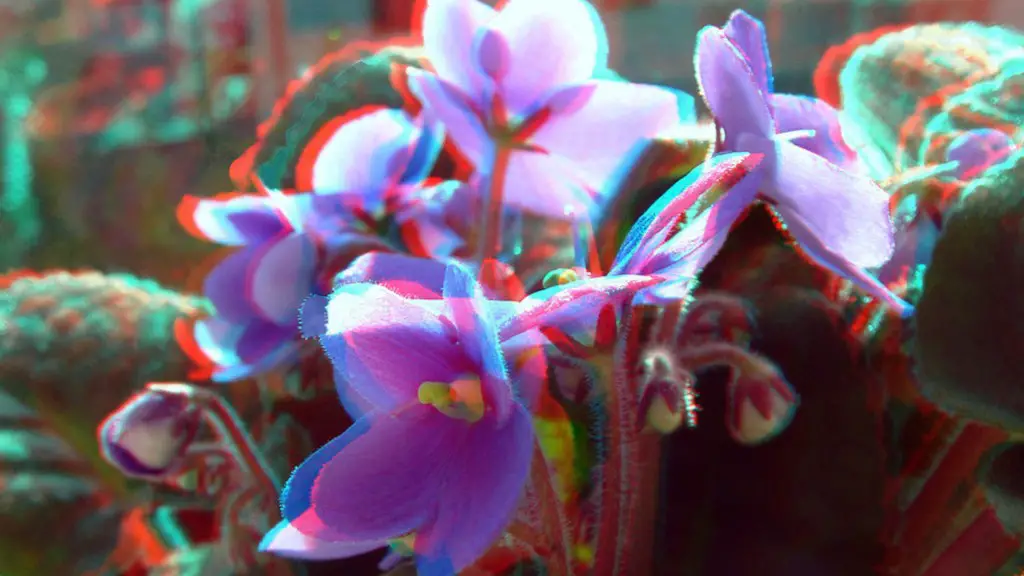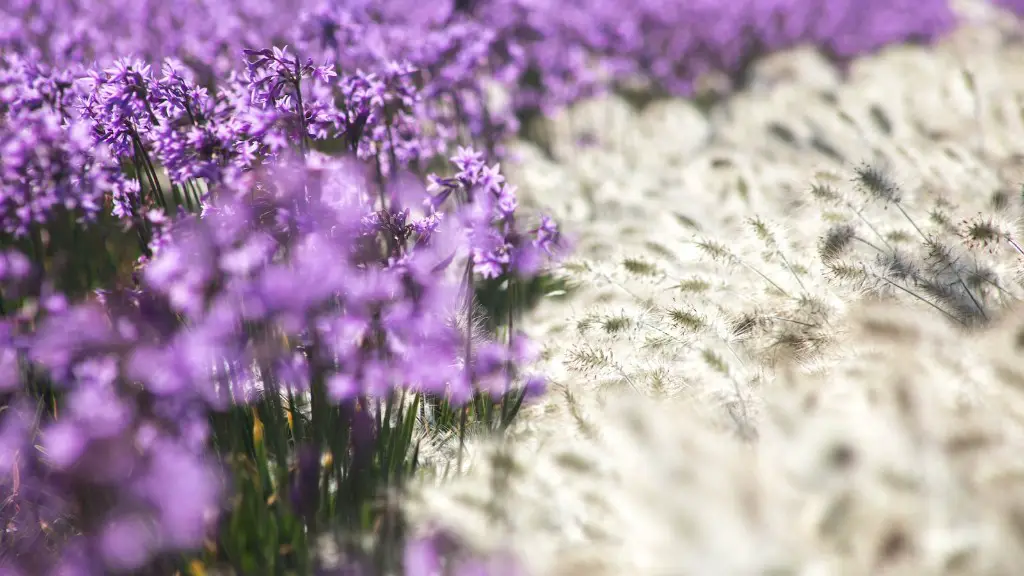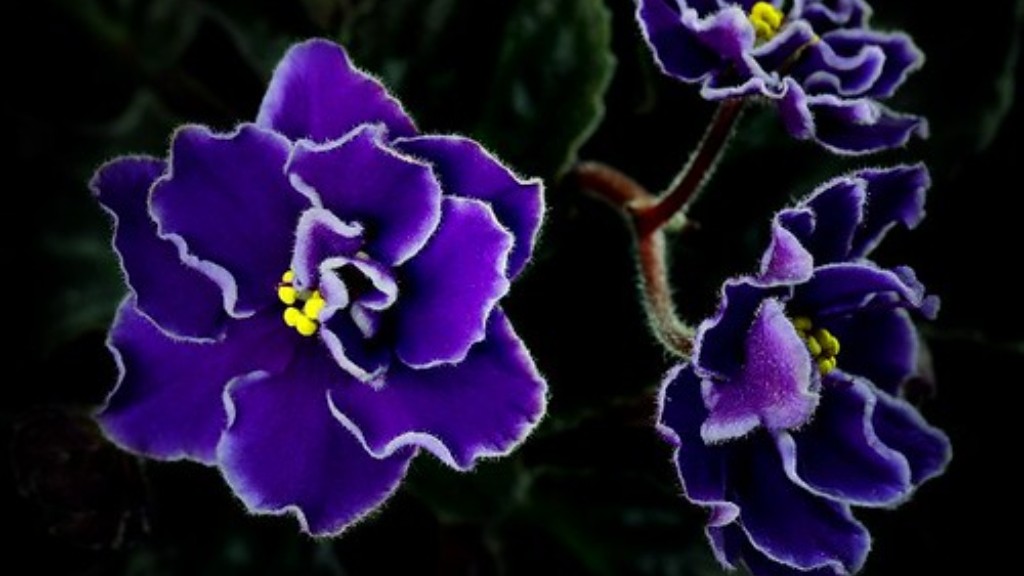African violets (Saintpaulia) are a beautiful addition to any home, and they are relatively easy to care for. One of the things they need in order to thrive is bright, indirect light. This can be achieved by placing them near a window where they will receive plenty of light during the day, or by using grow lights.
So, can African violets grow in artificial light? The answer is yes! In fact, many people find that using grow lights is the best way to provide their plants with the right amount of light. grow lights can be adjusted to provide the perfect amount of light for African violets, and they can be left on for longer periods of time than natural light.
If you decide to grow your African violets under artificial light, be sure to choose a grow light that emits a full spectrum of light. This will ensure that your plants get the light they need to thrive.
Yes, African violets will grow in artificial light. If you are using a grow light, make sure to place the light about 12 inches away from the plant and keep it on for about 14 hours a day.
Can African violets grow under LED lights?
A full spectrum LED light strip can also work for African Violet plants, especially those with a higher ratio of red/blue wavelengths mixed in with green and yellow wavelengths. These strips can provide a balanced mixture of lights that can help African Violet plants to grow and thrive.
African violets need a lot of light to grow, so a fluorescent light fixture is a great option. Suspend the fixture 8 to 10 inches above the plants and leave it on for 12 to 16 hours per day. This should provide enough light for the violets to thrive.
What are the best indoor lights for African violets
A good starting point for a broad range of African violets (AV) is one 5000K T5HO fluorescent light bulb placed above the AVs to achieve a range of 3000-3500 Lux for standards, and 4500-5000 Lux (two bulbs may be required) for mini’s and semi-mini’s. This will provide the optimal light intensity for growth and flowering of most AV varieties.
African violets are beautiful indoor plants that thrive in bright, indirect light. They are perfect for a plant stand or coffee table, and their blooms add a touch of color to any room.
Will any purple light work as a grow light?
Purple lamps that only provide red and blue light can be enough for plants to grow, but the isolated wavelengths only provide some of the wider range of energy that the sun and full-spectrum bulbs emit. This can lead to stunted growth or other problems for the plant. It is best to provide a full spectrum of light for optimal plant growth.
A wicking system is a great way to make sure your African violets are never over watered. The way it works is you only water the plant once a week and allow the plant to completely dry out between waterings. This prevents the plant from getting too much water and keeps the soil from getting too saturated.
Can African violets live without sunlight?
African violets are beautiful flowers that add a touch of elegance to any home. However, these delicate flowers can be tricky to care for. One of the most common problems with African violets is that they often don’t bloom. The most common reason for this is that they aren’t getting enough light. African violets need indirect sunlight, as direct sunlight can burn the leaves. The best location for African violets is a north- or east- facing window. Additionally, it’s important to keep plants away from cold glass and to rotate the pot once a week so all leaves receive light. With proper care, African violets can be a stunning addition to any home.
Grow lights are a great way to provide your plants with the light they need to grow. However, it is important to set the bulbs at the right height above the plants to get the best results. For African violets, the bulbs should be set about 12″ to 15″ above the tops of the plants, depending on the strength of the bulbs and size of the plants. It is also important to use a timer to ensure that the plants get 14 hours of light and 10 hours of darkness each day. This will help the African violets produce flowers.
Can African violets tolerate low light
If your African violet is not blooming, it may be due to insufficient light. Violets will tolerant low light levels (200 to 500 foot-candles), but the best light for them is a south or west window during winter. During warmer seasons, windows with an east or north exposure are best.
African violets prefer bright, indirect light. A site near an east or north window is often a good location. If a suitable window isn’t available, place African violets under a fluorescent light fixture containing two 40-watt fluorescent tubes.
Can African violets grow in bathrooms?
If you want your African violets to thrive, it’s important to provide them with the humidity they crave. Luckily, there are a few easy ways to do this. First, you can simply place your violets in humid rooms like kitchens or bathrooms. If they get enough humidity here, they should grow quickly and flower for a long time. Another option is to use a humidity tray. By placing your African violets on top of a tray filled with water and gravel, you can easily provide the extra humidity they need.
To keep your African violet around for a long time, you need to give it good care. That includes repotting it when necessary. The trick is knowing when to repot and what size container and soil to use. This article will help you with that.
Is it OK to touch African violet leaves
It is not recommended to brush the leaves of african violets because it can decrease plant quality and size. Repeated brushing can also damage the plant’s delicate leaves.
The roots of the African Violet need aeration, so keeping them moderately moist but never soggy is the key. Watering from the bottom so they can soak the water up, over an hour or so, will help to keep water out of the crown of the plant. African Violets like warmer water, around 70 degrees.
How often do I bottom water an African violet?
Water your African violet plant from the bottom up to prevent over-watering. Keep an eye on the bottom piece and refill as your plant depletes the water (usually every two to three weeks).
LED lights are the most efficient, effective, and customer-friendly way to grow plants at home than growing with fluorescent lights or incandescent lights. Offering low energy usage, low heat, and color optimized for growth, LED lights help plants grow better and faster while using less energy.
Warp Up
Yes, African violets can grow in artificial light, but they need to be close to the light source.
Although African violets are tropical plants, they will grow in artificial light. The key to success is to provide the plants with indirect light for at least eight hours a day. The plants will also need to be watered regularly and the soil should be kept moist.





